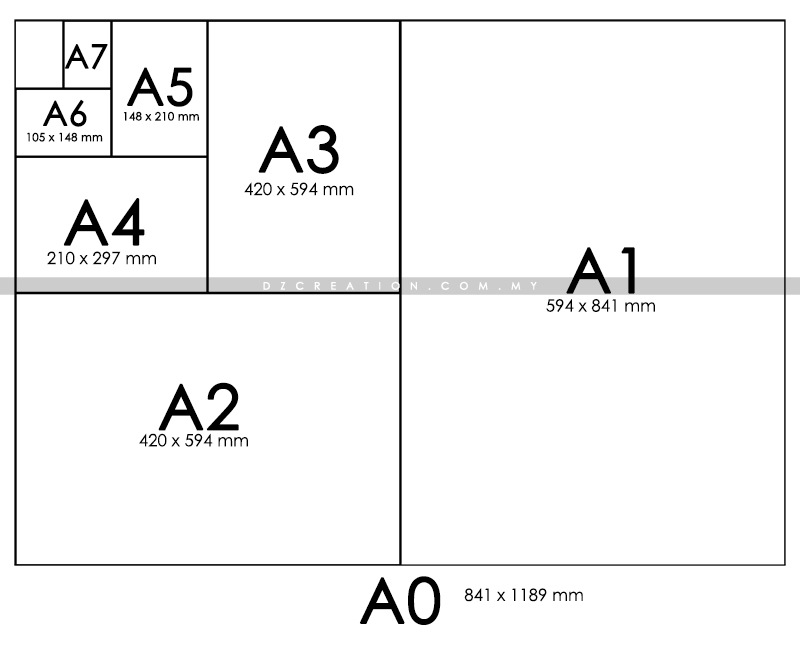A-series Paper Sizes and Formats (A0 to A10) are standardised dimensions defined under the ISO 216 international standard. These sizes are widely used by architects, designers, printers, and businesses. Below is a complete reference table showing the exact measurements in millimetres (mm), centimetres (cm), and inches.
| Format | Width x Height (mm) | Width x Height (cm) | Width x Height (inches) |
|---|---|---|---|
| A0 | 841 x 1189 | 84.1 x 118.9 | 33.1 x 46.8 |
| A1 | 594 x 841 | 59.4 x 84.1 | 23.4 x 33.1 |
| A2 | 420 x 594 | 42 x 59.4 | 16.5 x 23.4 |
| A3 | 297 x 420 | 29.7 x 42 | 11.7 x 16.5 |
| A4 | 210 x 297 | 21 x 29.7 | 8.3 x 11.7 |
| A5 | 148 x 210 | 14.8 x 21 | 5.8 x 8.3 |
| A6 | 105 x 148 | 10.5 x 14.8 | 4.1 x 5.8 |
| A7 | 74 x 105 | 7.4 x 10.5 | 2.9 x 4.1 |
| A8 | 52 x 74 | 5.2 x 7.4 | 2.0 x 2.9 |
| A9 | 37 x 52 | 3.7 x 5.2 | 1.5 x 2.0 |
| A10 | 26 x 37 | 2.6 x 3.7 | 1.0 x 1.5 |
Usage in Professional Fields

Large paper formats such as A0, A1, A2, and A3 are commonly used by professionals including architects, engineers, quantity surveyors, and similar disciplines. Accurate paper dimensions are crucial for organizing technical drawings according to the correct scale.
For example, an architect will select a paper size to match the required drawing format (e.g., for AutoCAD). Once the size is determined, the architect can then set an appropriate drawing scale. This ensures that when the building plan is translated into real-life construction, the structure will be built according to accurate proportions.
Having a proper paper format helps multiple stakeholders — architects, engineers, contractors, local authorities, and even clients — to refer to the drawings and perform accurate measurements. Typically, a minimum paper size of A3 is required for professional submissions and reviews.
Everyday Use in Business
Smaller paper sizes such as A5 and A6 are widely used by online business owners for printing airway bills (AWB) — the shipping labels that contain both sender and recipient information.
Did you know? Many sellers use thermal printers for this purpose. These printers are fast, reliable, and do not require ink, making them ideal for high-volume printing in small businesses.
Credit: Featured Image



